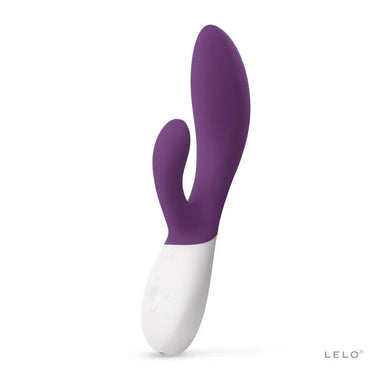Natural and Regular Condoms Guide
Natural and regular condoms including lambskin, nitrile, natural rubber, and polyurethane are effective in STIs and pregnancy prevention and adding flavor into your sex life.
How well the condoms work depends on the way you use them, the choice, and the types of your sex toys. Terris-Prestholt & Windmeijer (2016) states that there are male and female condoms. When used as recommended, the condoms guarantee 100% prevention of pregnancy. This means that not all people who use condoms are protected from sex errors. Moreover, Stover et al. (2017) states that condoms are also used as preventive measures against STIs including herpes, HIV/AIDS, pubic lice, syphilis, gonorrhea, and chlamydia if they are used correctly. However, the exact risk varies with the type of disease. Some diseases may be spread from areas that the condom does not cover, such as the scrotum. Moreover, they only lower the risk of HPV infection, but they do not protect you against it.
Condoms enhance a world of extreme sensations in your sex by reducing friction in anal, vaginal, and external sex. However, getting one that will give you all these fantasies can be challenging. This article discusses deeply how to choose and use condoms for better sex life.
What are Condoms?
According to Frankiewicz, Połom & Matuszewski (2018), a condom is a sheath-shaped barrier used during intercourse to reduce the probability of sexually transmitted infections and pregnancy. They enhance more pleasure during sex. The products are available in a variety of colors, flavors, and textures to allow you to get what works better with your body. A male condom has tube-like shapes worn over the erect penis when you are yet to have sex. They are also suitable with sex toys, but the compatibility varies with how best you use their devices. They are made from different materials like natural rubber, polyurethane, nitrile, and lambskin. Even though they have the same goals, their sensations vary from each other. Furthermore, some condoms do not suit certain people because of skin sensitivities. For this reason, as a beginner, it is important to try each type to see which one fits your desires perfectly.
Why Use Natural and Regular Condoms
Using condoms during sexual activities with your partner should not be an afterthought or an option. It is a mandatory thing. It will help you minimize the risks of getting unwanted or unintended pregnancies and the spread of sexually transmitted diseases. Be sure to use condoms, reduce such risks, and not end up as a statistic. They are considered the best form of birth control for those afraid of going through the needles for contraceptive options.
Best Lube to Use with Condoms
According to Wilson et al. (2017), lubricants are used during procreative intercourse to moderate the amount of wetness in the genitals. The best lube to use with condoms is the water-based and silicone-based lube. According to Crosby et al. (2004), water-based lubes are the best for condoms. You cannot use oil-based lube, especially on latex condoms, as it may alter the condoms and even pass infections to those using it. When using the water-based lube, be sure to have it in plenty because they are light and dry out quickly. Silicone-based lube seems to be the best as it is thick and sticky and stays for long without drying out.
Factors to Consider When Choosing Condoms
Choose According to the Material
Since condoms are crafted from different materials, getting the best one that suits you might be difficult, especially for a beginner. Since, certain materials cause allergies, ensure you try them first to get one that works well with you before fully engaging in sex with them.
Choose the Best Size
Choosing the right size helps you to prevent risks of condom errors and increase pleasure. Measure the size of your penis before you buy the condom. For example, measure the length by placing a ruler or tape measure under your erect dick. Make sure the edge of the ruler is at the base of the penis to ensure the whole shaft is covered. Also, measure the width by wrapping the tape measure around the middle of the hard erect penis. You can also use a string by wrapping it around the erect penis and measuring the length discovered on the ruler.
Check the Expiration Date
Lee & Gillath (2019) explains that you should always check the expiration date. Make sure you do not use expired condoms which increases the risks of health issues. All condoms have manufacturing and expiry dates labeled on the wrappers. Therefore, read the labels carefully to select the best condom.
Check on the Color
Colors are convenient in creating romantic impressions. Discuss with your partner to know what she likes before buying. If you have separate considerations, you can alternate the colors to allow everyone to enjoy sex.
Look For Defects
Check for defects like odor, bristle, sickness, and discoloration. If you identify any of these on your condom, dispose of it and get another one.
How to Use Male Condoms
- Make sure that the condom is in good condition and not opened. You can check the wrapper to see the expiry date.
- Open the wrapper carefully and take out the condom with clean hands.
- Wear it on an erect penis with the rolled part facing out. If you are not circumcised, pull the foreskin backward first before putting on the condom.
- Leave a half-inch of space at the tip to provide room for semen when you ejaculate to prevent the condom from breaking.
- Try to pinch the air out of the condom to create enough space for the semen and unroll it along the erect penis.
- Apply enough lubricant inside the condom and to the top to avoid its break-up during sex.
- Avoid using oil-based lubricants like Vaseline, body lotion, and baby oil to prevent weakening the condom.
- After sex, grab the rim and pull off the condom gently while you are still erect. You can let your partner do it gently to prevent the semen from spilling.
- Wrap it in a paper or tissue and dispose of it where other people cannot reach it.

How to Use Female Condoms
- Open the wrapper carefully and take out the condom.
- Apply the lubricant on the outside end to allow easy insertion.
- Avoid twisting it while putting on.
Safety Tips on Using Condoms
- When using a female condom, if you feel your partner’s penis is slipping in between it and your body, stop the game immediately.
- Also, if you feel the condom has slipped out of place, or the outer ring is pushed into your body, stop the penetration and pull out the dick.
- Buy from a trusted shop or purchase in bulk and stock to avoid frustrations, such as unwanted pregnancy.
- Store correctly. According to Don’ts (2016), condoms should not be stored in wallets, cars, and purses to prevent exposing them to heat which destroys them. Instead, store in a cool and dry place out of heat exposure.
- Communicate to your partner. Talk to your partner about her feelings over the use of condoms before buying the condoms for everyone to enjoy sex.
Frequently Asked Questions about Regular Condoms
How Safe are Condoms?
Condoms are a sure bet when you want to feel safe and protected, especially during sexual activities. However, this is possible if they are not tampered with by poking holes or using the oil-based lubricants on them. You should also avoid using silicone-based lubricants on the condoms made of latex as they may weaken the condom. To be safe, make sure that you follow all the instructions carefully and properly.
Are There Allergy Concerns?
Condoms are found in three different types, latex, plastic, and lambskin. Most people use latex condoms when engaging in sexual activities with their significant other. However, some are allergic to latex. They are advised to use plastic or natural condoms and lambskin in such cases. However, you should note that plastic and latex condoms are very effective compared to natural condoms. Moreover, Marfatia, Pandya, & Mehta (2015) states that latex condoms are less porous than natural condoms. They can protect you from sexually transmitted diseases and also pregnancy. However, natural condoms can protect you from pregnancy but cannot protect you from sexually transmitted diseases because they have some openings.
Do Male and Female Condoms Provide the Same Protection?
The male and female condoms offer protection, but one is more effective than the other. The male condoms are 98% effective at protecting against pregnancy and STIs. This means that in every 100 women whose partners use condoms the right way, 2 are at risk of getting pregnant.
The female condom, on the other hand, is 95% effective when it is used correctly. This will mean that in every 100 women that use the condoms correctly, 5 are at risk of getting pregnant. Condoms also minimize the risk of passing sexually transmitted infections to your partner anytime you wear them when engaging in sexual activities.
Can Condoms Be Used for Oral Sex?
There are condoms known as tongue or oral condoms. They are used during oral sex. They help to protect one from getting sexually transmitted infections. Some regular condoms are also safe to be used during oral sex. Latex condoms are the ideal ones. Moreover, one should consider using non-lubricated and flavored condoms. Some people get turned off by lubricated condoms. Some people try to use some oil-lubricated food products. It should not be an alternative as it may interfere with latex condoms, thereby not protecting you from sexually transmitted infections.
Are There Risks of Using Condoms?
Some people are allergic to condoms that are made from latex. This will cause you to get some irritations and reactions on the skin. Those who are allergic to latex condoms should find an alternative and use natural condoms. The only disadvantage of using natural condoms is that they mainly protect you from getting unintended pregnancy. They do not prevent you from the risk of getting sexually transmitted infections. However, the advantages will always outweigh the disadvantages.
Can I Use a Condom in Water?
Condoms can always be used in water with no effect. The best condoms to use in water are made from latex. When using them in water, avoid using the oil-based lubricant or shower items like soap and gels. This is because they may weaken or damage the whole condom. When you use the best lubricant, the water-based lubricant, you are guaranteed to have lots of fun with your partner in your sexual activities and still be protected against sexually transmitted infections.
Can Condoms Fail?
When condoms are not used correctly, there are mistakes that one will be able to make. Some of these mistakes can be risky to your sexual life in general.
When planning to get into sexual activities with your partner, you must wear a condom once the penis is erect. Do not mistake engaging yourself in sexual activities and then thinking midway that you are supposed to wear a condom. Try not to remove the condom before the sexual activity is done. Also, be sure that you leave some space at the tip so that the semen can be collected in that space. You can as well check the packaging of the condom before using it. Check if it has been tampered with or has small holes on it. This will help prevent unintended pregnancies and the spread of sexually transmitted infections.
Conclusion
Condoms are protective barriers that are worn on a penis or inserted into the vagina to protect the users from STIs, unwanted pregnancy, and enhance more pleasure during sex. You can get them in a variety of colors, flavors, and textures to allow you to get what works better with your body. Before buying female or male condoms, consider the color, material, size, and defects to get good results out of them. Use them correctly to achieve your aim.
References
Crosby, R. A., Graham, C. A., Yarber, W. L., & Sanders, S. A. (2004). If The Condom Fits, Wear It: A Qualitative Study Of Young African-American Men. Sexually Transmitted Infections, 80(4), 306-309.
Don’ts, C. (2016). The Right Way To Use A Male Condom.
Frankiewicz, M., Połom, W., & Matuszewski, M. (2018). Can the evolution of male contraception lead to a revolution? Review of the current state of knowledge. Central European Journal of Urology, 71(1), 108.
Lee, J., & Gillath, O. (2019). Choose Your Own Sexual Adventure Task. Handbook of Sexuality-Related Measures, 390.
Marfatia, Y. S., Pandya, I., & Mehta, K. (2015). Condoms: Past, present, and future. Indian journal of sexually transmitted diseases and AIDS, 36(2), 133.
Stover, J., Rosen, J. E., Carvalho, M. N., Korenromp, E. L., Friedman, H. S., Cogan, M., & Deperthes, B. (2017). The case for investing in the male condom. PloS one, 12(5), e0177108.
Terris-Prestholt, F., & Windmeijer, F. (2016). How to sell a condom? The impact of demand creation tools on male and female condom sales in resource limited settings. Journal of health economics, 48, 107-120.
Wilson, S. L., Adam, J. K., & Krishna, S. B. N. (2017). Effects of vaginal lubricants on in-vitro progressive spermatozoa motility. African Journal of Reproductive Health, 21(3), 96-101.




































